The King of Battle: The Legacy of the United States Field Artillery
- Jetta Allen

- Mar 23
- 13 min read
Updated: Apr 18
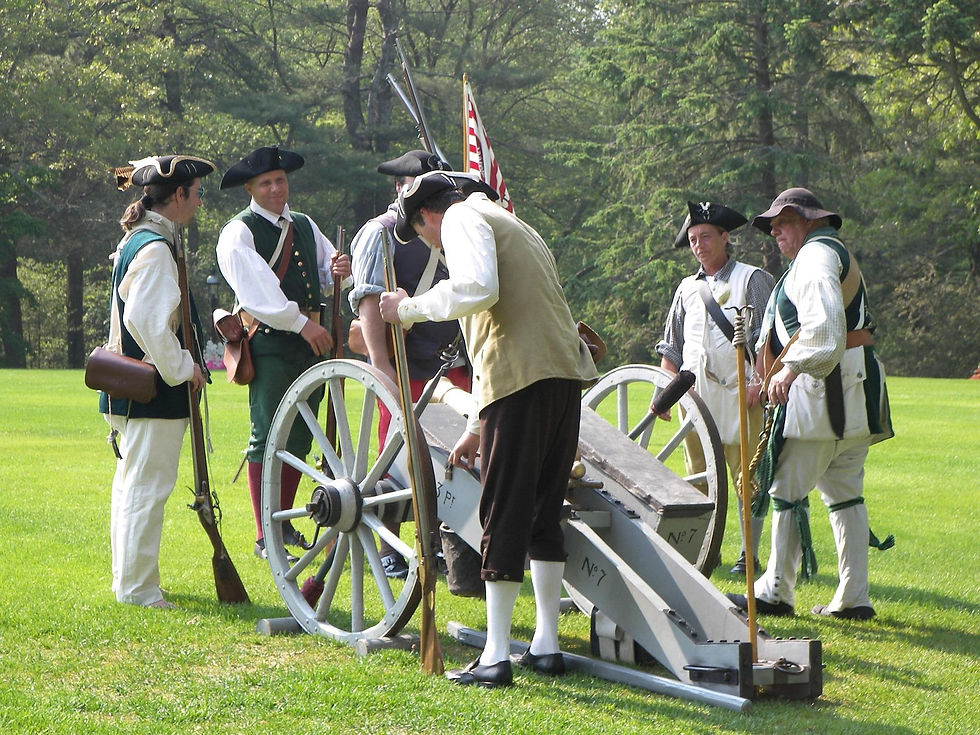
Field Artillery has played a key role in the United States Army since 1775. From simple cannons made from cast iron and bronze to advanced high-grade steel machinery, Field Artillery within the Army and Marines has evolved into modernized combat elements that combine precision, power, and technological innovation; employing advanced systems that would have seemed like science fiction to their Revolutionary War predecessors. Known as the 'King of Battle’, Field Artillery has shaped the outcome of countless conflicts by providing fire support to ease in the maneuvering of forces and to maintain battlefield dominance through long-range precision strikes. As the battlefield continues to evolve, these units remain an indispensable force multiplier in modern military operations. To grasp the profound impact of Field Artillery in shaping our American military force, we must trace its history from the colonial battlefields to today's fire support systems. This journey reveals more than just military evolution - it tells the story of American engineering, ingenuity, determination, and the unwavering commitment of so many service members and individuals within our military community to protect our nation's values and freedoms.
American Revolutionary War (1775-1783)
In 1774 the United States Continental Congress was formed. A year later, in 1775, Congress created the Continental Army, paving the way for the establishment of the Field Artillery Branch. The Continental Army Field Artillery was equipped with cannons and howitzers, primarily used for bombardment during sieges and open-field battles. During this period, the Army’s Field Artillery branch began to take shape. However, it lacked standardization and specialized training that would later shape the branch into its strong fighting force of the present.
Early 19th Century
After the American Revolution, the United States Army began formalizing its artillery. In March 1802, President Thomas Jefferson established the United States Military Academy at West Point to begin the specific training and standardization that was missing during the American Revolution. At West Point, soldiers became trained as artillery officers. Following the establishment of a military academy, Field Artillery regiments would then be formed and incorporated into the United States Army and later the Marine Corps.
Civil War (1861-1865)
The American Civil War marked a major turning point for Field Artillery. The United States Army introduced rifled cannons, which had greater range and accuracy. The development of better ammunition, like the explosive shell, significantly changed artillery tactics, allowing for more precise fire support. Artillery was essential in battles like Gettysburg, where both sides relied on massed artillery to support infantry operations.
Post-Civil War to World War I
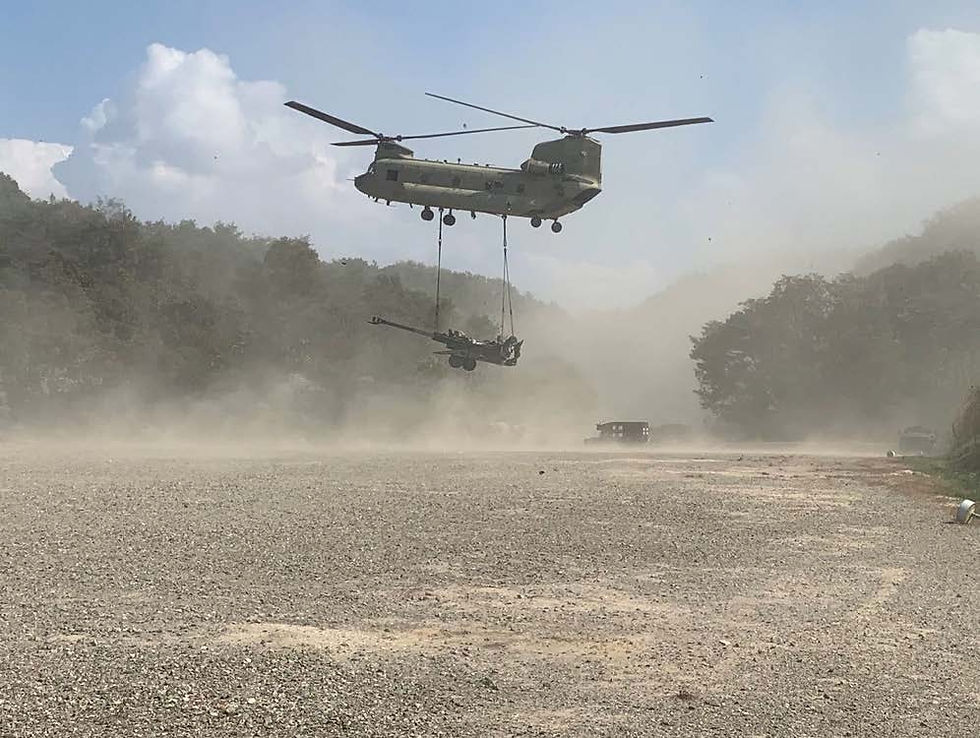
In the late 19th century, artillery continued to evolve with innovations in fire control and technology. The United States Army modernized its artillery forces, restructuring them into separate units. By World War I, Field Artillery had become a crucial element of modern warfare.
World War I (1914-1918)
By World War I, advancements in artillery–including more accurate targeting, larger-caliber guns, and new ammunition created a deadly force on the battlefield. Field Artillery's long-range firepower allowed it to target enemy troops, supply lines, and fortifications, crucial for breaking the stalemate of trench warfare. It softened enemy defenses and disrupted supply lines while supporting infantry and tanks in offensive and defensive operations. As a result, Field Artillery became essential for both breaking through and shaping strategy during the war.
World War II (1939-1945)
The United States Field Artillery expanded dramatically during World War II. The Army employed various artillery pieces, from light to heavy guns, howitzers, and anti-aircraft artillery. The introduction of mechanized artillery, like the M7 Priest self-propelled gun, revolutionized mobility on the battlefield. The M7 Priest’s main armament was an M2A1 105mm howitzer, with a secondary armament of a 12.7mm M2 Browning HB machine gun. All of this was engineered into a movable, tank-like, heavily armored, military vehicle with a 7 man crew. No longer requiring towed artillery units, these mobile fire support units were integrated with infantry, armor, and air forces to create coordinated fire support in combat.
Cold War and Beyond (1947-Present)
After World War II, artillery evolved with technological advancements, including guided missiles, improved fire control systems, and automation. The development of the M109 howitzer in 1963 and its variants represented the United States Army's continued focus on modernizing artillery for rapid deployment and precision targeting. During the Gulf War, Iraq War, and Afghanistan War artillery played a vital role in combined arms operations, with increasingly sophisticated systems allowing for modern technology, like precision-guided munitions, increasing the effectiveness and accuracy of fire support in contemporary combat. With advanced targeting systems and real-time communications, artillery units can now deliver highly targeted strikes on enemy positions, minimizing collateral damage and increasing effectiveness on the battlefield. This shift towards precision enables artillery to play a crucial role in both conventional and asymmetrical warfare.
Korea War (1950-1953)

In 1950, the Division Artillery, known as DIVARTY, fired in support of the United States, the Republic of Korea, and United Nations forces in South Korea until the cessation of the war. The Division arrived in Korea, via Pusan, on 23 July 1950, becoming the first unit to reach Korea directly from the United States. The Warrior Division was the first unit to break out of the Pusan Perimeter and led the Eighth Army‘s Drive to the Manchurian Border. The 2nd Infantry Division was awarded the Republic of Korea Presidential Unit Citation on 29 September 1950 for the defense of the Naktong River line against enemy attack. On 5 February 1951, the 23rd Regimental Combat Team moved into the narrow valley of Chipyong-ni. On 13 February 1951, the 23rd Regimental Combat Team, with the attached French Battalion, was cut off and surrounded by four Chinese Divisions. For more than three days the 23rd Regimental Combat Team and the 1st ROK Division bravely fought in freezing weather, killing over 5,000 Chinese and causing the Communist Chinese Forces to withdraw.
The Battle of Chipyong-ni was the first Major defeat for the Chinese and proved to be the turning point of the Korean War. In April and May 1951, the 2nd Infantry Division was instrumental in smashing the Communist’s Spring Offensive as they fought for hilltops in the Iron Triangle, Pork Chop Hill, Baldy Hill, Bloody Ridge, and Heartbreak Ridge. During the Korean War, 20 2nd Infantry Division Soldiers were awarded the Medal of Honor. The Division was awarded the Republic of Korea Presidential Unit Citation on 26 October 1953, for valor in combat and excellence in the training and integration of ROK forces into their ranks. The 2nd Infantry Division emerged as the most decorated Division from the Korean War. DIVARTY remained in Korea from 1965 until reflagging in 2006, later activating in 2014 at Joint Base Lewis-McChord, Washington. In September 2021, the 2nd Infantry Division Artillery relocated to Camp Humphreys, Korea to support the 2nd Infantry Division in the Korean Theater of Operations. If on Camp Humphreys, be sure to check out the 2nd Infantry Division, Eighth Army, and Korean Theater of Operations Museum which tells the stories of soldiers in the Korean Theater of Operations experience since 1950.
Redlegs Throughout History
“Redlegs Do It Best” is a coined phrase in the Field Artillery branch, but there is a long history behind its meaning. The term "Redlegs" is a nickname that dates back to the 19th century and is used to refer to service members in Field Artillery, both in the Army and the Marine Corps. The origin of the nickname comes from the distinctive red trim that was part of the artillery uniforms during the Mexican-American War (1846–1848). Artillery soldiers wore uniforms with red piping on their pants, which set them apart from other branches of the military. This red trim became an identifiable symbol of the Field Artillery, and over time, those in the branch began to be affectionately called "Redlegs”. The nickname stuck and has since been embraced by the Field Artillery community. It symbolizes the pride, heritage, and camaraderie that has played a key role in our country's military operations throughout history. The United States Field Artillery Association keeps documentation of “Legendary Redlegs”. Among them are Alexander Hamilton, George Washington Whistler, Edgar Allen Poe, Former United States President Harry S. Truman, Babe Ruth, and Reggae artist Shaggy all of whom have contributed to the legacy of the Redlegs.
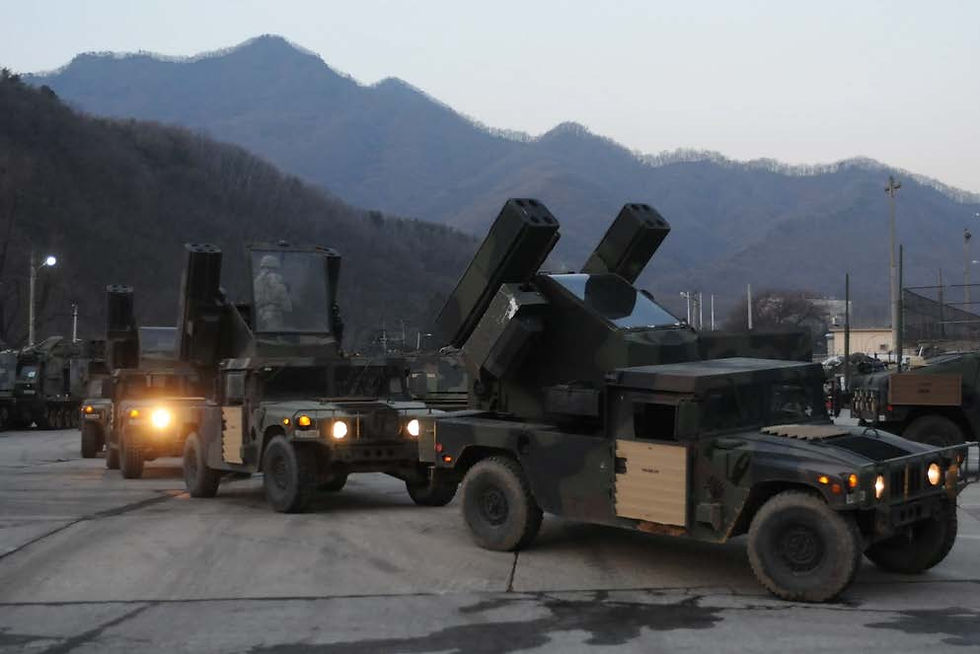
2nd Infantry Division in South Korea
The 2nd Infantry Division is the last permanently forward-stationed division in the United States Army. As part of the great ROK-U.S. Alliance, the Division’s mission is to deter aggression, and if deterrence fails, ensure it is ready to “Fight Tonight” to defend the Republic of Korea. Forged during the Korean War, the great ROK-U.S. Alliance is an equal partnership committed to the strong defense of Korea. Today, the 2nd Infantry Division patch is spread out across the world. On 3 June 2015, The ROK-U.S. Combined Division was activated to improve the abilities of Combined Operations. The ROK 16TH Mechanized Brigade, partnered with the Combined Division, accumulates expertise in combined warfare and the Warriors of the 2nd Infantry Division/ROK-U.S. Combined Division stand ready – to “Fight Tonight!”
35th Air Defense Artillery Brigade
The 35th Air Defense Artillery (ADA) Brigade is the sole ADA unit deployed on the Korean Peninsula, tasked with countering missile threats. Equipped with advanced systems like the Patriot missile defense, it is the only active unit capable of providing integrated, rapid defense against a spectrum of hostile missile attacks. Positioned strategically, the brigade plays a critical role in both deterrence and defense, ensuring the protection of U.S. and allied forces, as well as South Korean assets, against growing regional threats. “Ready in Defense”
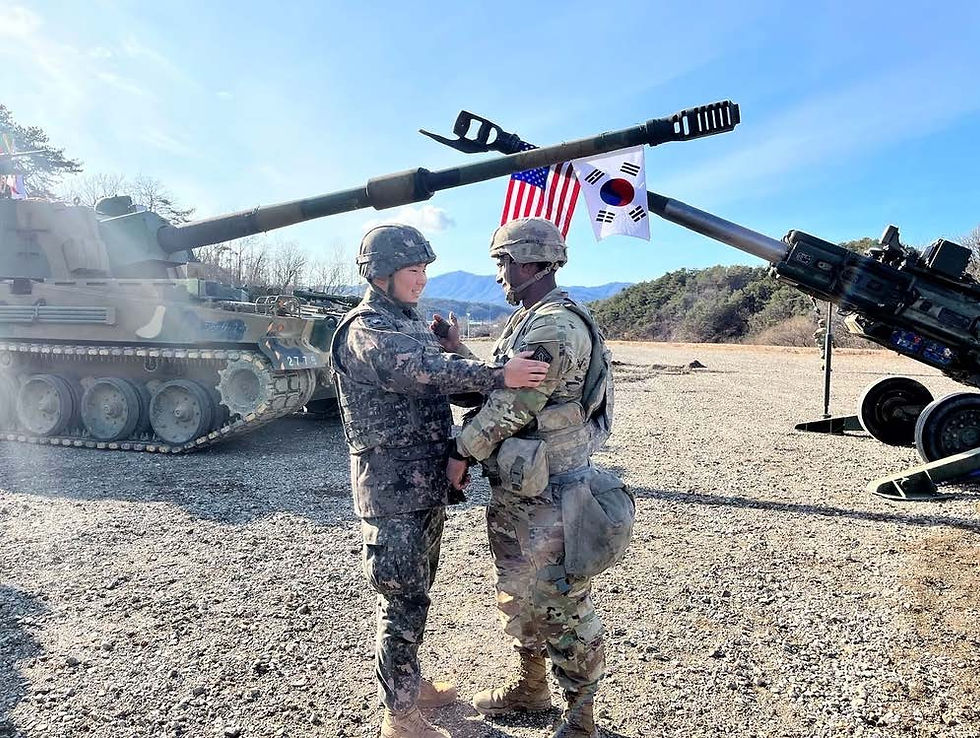
Field Artillery Today and the United States Field Artillery Association
Field Artillery continues to play a vital role in modern military operations and the United States Field Artillery Association (USFAA) stands as a key advocate for its evolution, efficiency, and the professional development of artillerymen. The USFAA is dedicated to fostering camaraderie and promoting the ongoing education of the artillery community. Through its networking opportunities, programs, and commitment to preserving the rich traditions, the USFAA ensures that today’s artillery forces are not only prepared to meet the demands of contemporary warfare but also continue to honor the legacy of those who served in past conflicts. Whether on the battlefield or through advocacy efforts, the association plays a pivotal role in strengthening the expertise and morale of the Field Artillery.
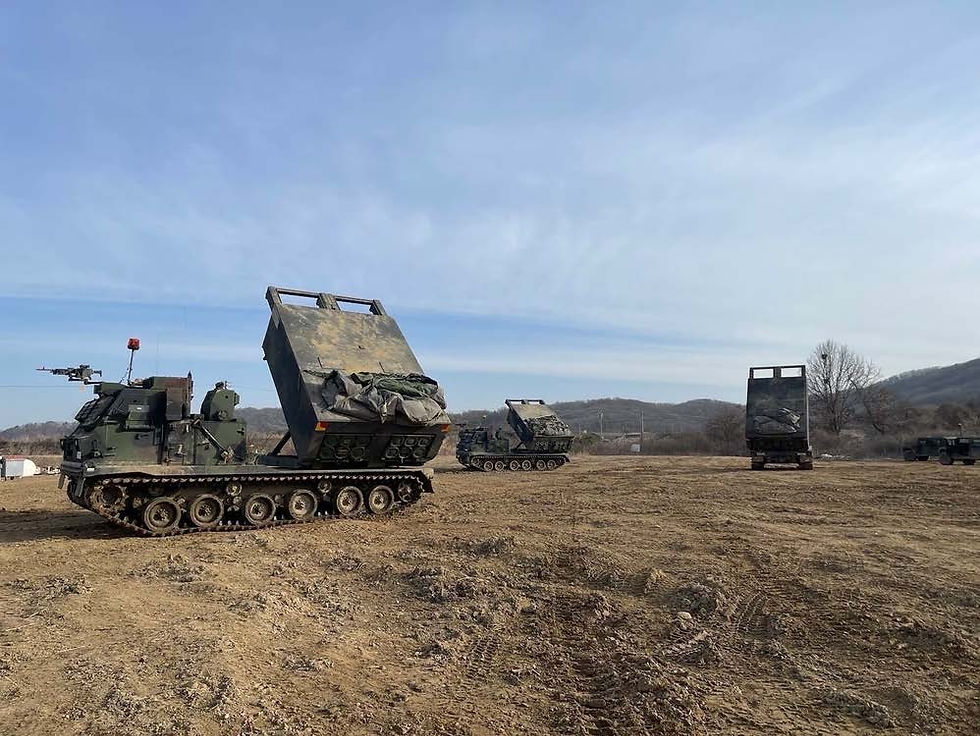
The Legend of Saint Barbara
Like many military branches, Field Artillery has its own lore and legends. Saint Barbara was the beautiful daughter of Dioscorus, a man who was said to have pagan beliefs during the third or fourth century. Though imprisoned and eventually tortured to her death, his daughter would not renounce Christianity. After her death, her father was said to have been killed by lightning from above, godly vengeance some said. The Christian church venerated her as a Saint around the seventh century. Today Saint Barbara is the patron saint of Field Artillery and “regarded as the sainted patroness of those in danger from thunderstorms, fire, and explosions” according to the USFAA.
The Legend of Molly Pitcher
During the American Revolutionary War women supported the battlefront in many ways. From lending first aid and tending to the wounded to maintaining Army camps and delivering supplies, women played a vital role in the war. Unknown to many, cannons during that time had to be cooled with water to prevent warping and even exploding. Women would be utilized to carry water to the firing line to cool down the cannons. They would quite literally “pitch” or throw the water on the cannons while also providing water to soldiers. Mary Hays McCauly, born 13 October 1754, was an artilleryman’s wife and water pitcher, joining in battle with her husband at the Battle of Monmouth. While several versions of this legend tell of her heroic efforts, the themes remain the same, Mary Hay McCauly kept cannons firing when her husband fell to heat or injury. Her story would become legendary, garnering her recognition from General George Washington before he became our first President. She would even go on to receive a veteran's pension from the state of Pennsylvania for her service during the Revolutionary War.
Mary Hays McCauly’s name would come to be synonymous with the nickname “Molly Pitcher”. Some say this nickname came about from her and her husband’s nicknames Molly, others say it was because she was a water pitcher who helped on the front lines. Regardless of its origin, her name and heroic efforts as a gunner’s spouse are still remembered today by the Field Artillery.

Legends, Traditions, and Honor
In the United States Army, the Saint Barbara's Ball is a tradition specifically celebrated by the Field Artillery branch. This formal event honors Saint Barbara and is considered a prestigious and important occasion for those involved in artillery, serving as a means to preserve the history and camaraderie of the branch. The ball is typically held annually and serves as a social event for service members and their families to come together, celebrate the traditions of the artillery branch, and honor Saint Barbara’s role in protecting them from harm. During the ball, there are usually speeches, a formal dinner, and awards or recognition for outstanding service within the artillery community. The event blends legends, traditions, and honor through reflection on the sacrifices made by those serving in the Field Artillery and the overall military community.
At the Saint Barbara’s Ball, the Honorable Order of Saint Barbara honors individuals who have exemplified the highest standards of integrity and moral character, demonstrated exceptional professional competence, served the United States Army or Marine Corps Field Artillery with dedication and selflessness, and made significant contributions to the advancement of the Field Artillery, earning the respect of their seniors, subordinates, and peers alike. The Ancient Order of Saint Barbara is a prestigious distinction awarded to a select group whose enduring commitment to the Field Artillery reflects the spirit, honor, and selflessness that Saint Barbara symbolizes. This recognition is reserved for those whose lifetime of exceptional service to the United States Army or Marine Corps Field Artillery sets them apart from their peers in the Honorable Order. It represents the highest level of achievement within the Order of Saint Barbara.
The Saint Barbara’s Ball recognizes more than just service members. The Artillery Order of Molly Pitcher honors individuals who have made significant voluntary contributions to improving the Field Artillery community. The Esteemed Artillery Order of Molly Pitcher represents an even higher honor, recognizing those who have dedicated their careers to the Field Artillery, mentored junior-level spouses, and shared the spirit of Molly Pitcher with the military and beyond.
Honoring Excellence: 2025 Awardees
Esteemed Artillery Order of Molly Pitcher
2ID/DIVARTY: Mrs. Kensheilah D. Young
Artillery Order of Molly Pitcher
2ID/DIVARTY: Mrs. Alyssa Crone, Mrs. Dena Jaroszewski, Mrs. Julieme Kim, Mrs. Shantel Lang, Mrs. Joy Wang
210FAB: Mrs. Lindsay Hapney, Mrs. Cynthia Stanbury
35th ADA: Lauren Kollmann
USFK/CFC: Mrs. Jetta Allen, Mrs. Hyo Youn Kim, Mrs. Jeonghyun Park
8th Army: Mrs. Jennefer Acevedo
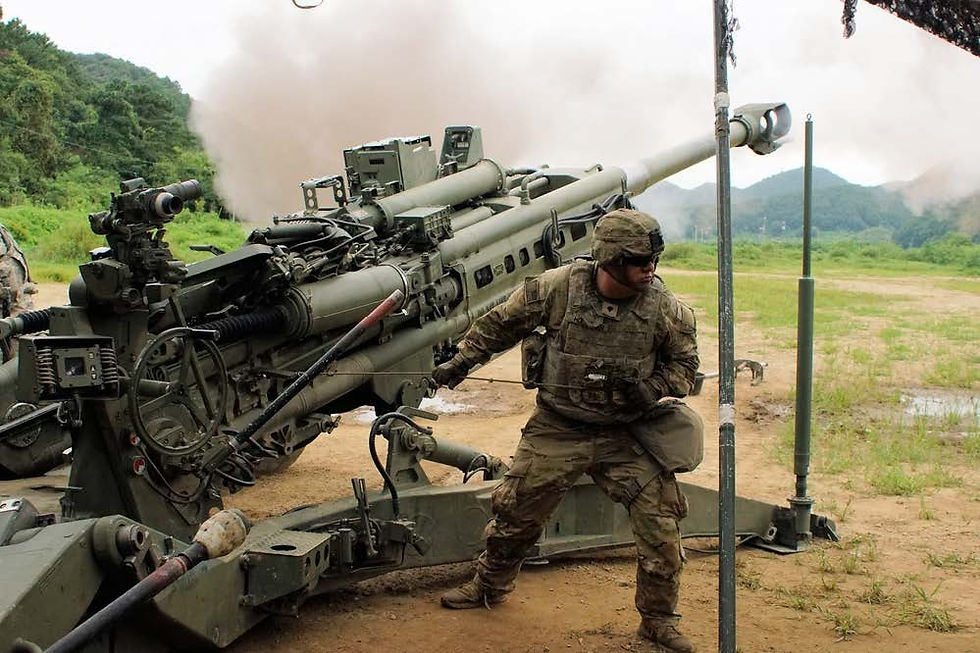
Honorable Order of Saint Barbara
21D/DIVARTY: Maj. Stephen Stafford, Capt. Dawna Casanova, Capt. Ryan Crone, CW2 Brian Lang, Command Sgt. Maj. Armando Delarosa, Sgt. 1st Class Brenton Witherow
210 FAB: Lt. Col. Daniel Blankenhorn, Lt. Col. Immanuel Mgana, Maj. Tityina Clarke, Maj. Brandon Doble, Maj. Lee Harrison, Maj. Yandy Leyva, Maj. Michael Terry, Maj. Hardy Temoney, Capt. Andrew Chiang, Capt. Nancy Gomez, Capt. Joseph Hubble, Capt. Daryldan Manlangit, Capt. Graham Morgan, Capt. Jin Park, Capt. Sehyeon Park, Capt. Carrick Porter, Capt. Christina Rimbey, Capt. Joshua Ryan, Capt. Paul Shelton, Capt. Daniel Stanbury, Capt. Andrew Winters, CW2 Nathan Li, CW2 John Paylor, CW2 Jeimmy Tuufuli, Command Sgt. Maj. Glen Hapney, Command Sgt. Maj. Jeffrey Joseph, 1st Sgt. Erick Fountain, 1st Sgt. George Sumrall, 1st Sgt. Andrew Watson, Master Sgt. Robert Spurlock, Sgt. 1st Class Cameron Bornowski, Sgt. 1st Class Kyle Bowen, Sgt. 1st Class Terrance Chamberlin, Sgt. 1st Class Earl Friolet, Sgt. 1st Class Kenneth Gibb, Sgt. 1st Class Sean Henry, Sgt. 1st Class Kassi Jaksch, Sgt. 1st Class Peyton Jones, Sgt. 1st Class Nathan Knight, Sgt. 1st Class Frank Murphy, Sgt. 1st Class Clarence Norton, Sgt. 1st Class Joseph Strevel, Sgt. 1st Class Lawrence Washburn
35th ADA: Brig. Gen. Jin Pak, Maj. Sharrod Quillen, Capt. Christopher Lopez, Capt. Eathan Mall, Capt. Thomas Lee, Capt. Igor Semenov, 1st Sgt. Gerald Harness, W01 Buchanan, CW2 Robles, Sgt. 1st Class Tate, Sgt. 1st Class Ezekiel Sandoval, Sgt. 1st Class Njenja, Sgt. 1st Class Craig Rodgers, Staff Sgt. Park, Staff Sgt. Arturo Del Villar, Sgt. Salgado, and Sgt. Libut.
USFK/CFC: Lt. Col. Young Choi, Maj. Jacob Cook, Capt. Alex De Giovanni, Capt. Shane Song
8th Army: Col. Samuel Yi, Maj. Avron Bloom, Capt. Kinnidie White, Sgt. Maj. Jose Montanez, Master Sgt. Jason Gloud
1-37 FAR: Capt. Michael Kelley, Capt. Johnathan Philley, Capt. Payton Rengel, Capt. Benjamin Whiddon, Capt. Joanna Zalewski, 1st Lt. Rockeem Carey, 1st Sgt. Vicente Valerio, Sgt. 1st Class Nickson David, Sgt. 1st Class Kepas Edgar, Sgt. 1st Class Mark Lieber, Sgt. 1st Class Stephan Pemberton, Sgt. 1st Class Matthew Rutter, Sgt. 1st Class Michael Santos, Sgt. 1st Class Scott Summy
Pictures from the St. Barbara's Ball 2025
*The appearance of U.S. Department of Defense (DoD) visual information does not imply or constitute DoD endorsement.
Sources
(n.d.). Brief History of West Point. United States Military Academy West Point. Retrieved January 29, 2025, from https://www.westpoint.edu/about/history-of-west-point/brief-history-of-west-point
Lankford, J. (n.d.). The 105mm Howitzer Motor Carriage M7. The Army Historical Foundation. Retrieved January 29, 2025, from https://armyhistory.org/the-105mm-howitzer-motor-carriage-m7/
(2025). Legendary Redlegs. United States Field Artillery Association. https://www.fieldartillery.org/legendary-redlegs
(n.d.). Mary Ludwig Hays. National Women's History Museum. Retrieved January 29, 2025, from https://www.womenshistory.org/education-resources/biographies/mary-ludwig-hays
(n.d.). Molly Pitcher at the Battle of Monmouth. National Archives Catalog. Retrieved January 29, 2025, from https://catalog.archives.gov/id/532935
(2025). United States Field Artillery History. United States Field Artillery Association. https://www.fieldartillery.org/field-artillery-history
(2025). USFAA Awards. United States Field Artillery Association. https://www.fieldartillery.org/awards

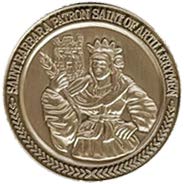
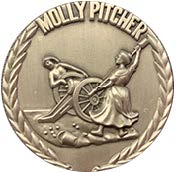































































































































































































































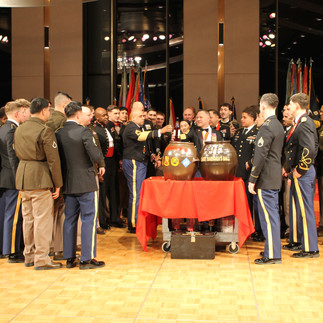



































































































































































































































































Comments